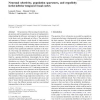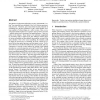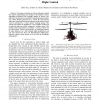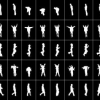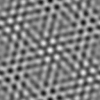73
Voted
ICASSP
2011
IEEE
14 years 4 months ago
2011
IEEE
The detection of Steady-State Visual Evoked Potential (SSVEP) responses in the Electroencephalogram (EEG) is a current challenge in signal processing applied on Brain-Computer Int...
91
Voted
BC
2007
15 years 23 days ago
2007
Abstract Thesparsenessoftheencodingofstimulibysingle neurons and by populations of neurons is fundamental to understanding the efficiency and capacity of representations in the br...
NIPS
2003
15 years 2 months ago
2003
We report and compare the performance of different learning algorithms based on data from cortical recordings. The task is to predict the orientation of visual stimuli from the ac...
102
Voted
APGV
2005
ACM
15 years 6 months ago
2005
ACM
The illusion of self-motion induced by moving visual stimuli (“vection”) has typically been attributed to low-level, bottom-up perceptual processes. Therefore, past research h...
99
Voted
ICRA
2009
IEEE
15 years 7 months ago
2009
IEEE
— The paper describes an indoor helicopter testbed that allows implementing and testing of bio-inspired control algorithms developed from scientific studies on insects. The heli...
135
click to vote
ICIP
2007
IEEE
16 years 2 months ago
2007
IEEE
The problem of human activity recognition via visual stimuli can be approached using manifold learning, since the silhouette (binary) images of a person undergoing a smooth motion...
ECCV
1992
Springer
16 years 2 months ago
1992
Springer
Researchers have long argued that an attentional mechanism is required to perform many vision tasks. This paper introduces an attentiona] prototype for early visual processing. Ou...
119
Voted
ICCV
2003
IEEE
16 years 2 months ago
2003
IEEE
A commonly used representation of a visual pattern is the set of marginal probability distributions of the output of a bank of filters (Gaussian, Laplacian, Gabor etc...). This re...
89
Voted
CVPR
2008
IEEE
16 years 2 months ago
2008
IEEE
Visual and non-visual data are often related through complex, indirect links, thus making the prediction of one from the other difficult. Examples include the partiallyunderstood ...

